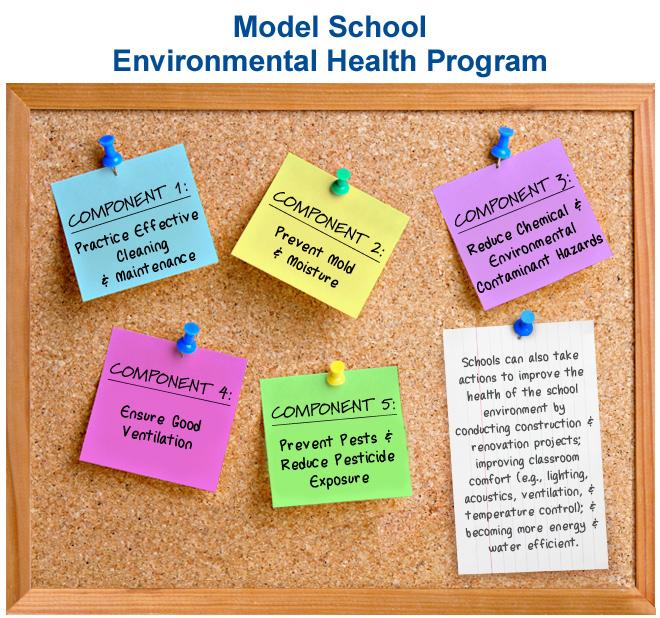EH Guidelines - Model Program

A school environmental health program is a holistic, comprehensive, and actionable strategy that integrates preventative measures and addresses environmental health issues by fostering well-maintained school buildings and grounds. Sustainable school environmental health programs promote environments that are conducive to learning and protect the health of building occupants. Successful school environmental health programs are best implemented and maintained by promoting awareness and participation among teachers, staff, and students.
EPA has developed a set of key actions to assist schools and school districts in implementing and sustaining environmental health programs. These actions are grouped into five broad components of environmental health issues that schools need to address to ensure that school environments are healthy and promote high achievement by students and staff. These five components are:
 Practice Effective Cleaning and Maintenance;
Practice Effective Cleaning and Maintenance;
 Reduce Chemical and Environmental Contaminant Hazards;
Reduce Chemical and Environmental Contaminant Hazards;
 Prevent Pests and Reduce Pesticide Exposure
Prevent Pests and Reduce Pesticide Exposure
Each component includes three tiers of action, which vary based on a school’s experience and available resources:
- Tier 1 actions are low cost fixes schools can make immediately, and are a good starting point for schools with little or no previous experience with environmental health programs.
- Tier 2 actions are essential components of a comprehensive school environmental health program.
- Tier 3 actions are provided for schools that have established a successful school environmental health program and are looking for ways to enhance their pre-existing program.
Schools can also take actions to improve the health of the school environment through construction and renovation projects; improving classroom comfort (e.g., lighting, acoustics, ventilation, and temperature control); and becoming more energy and water efficient.
Read the model program online for more information. An addendum to the guidelines provides best practices and lessons learned from five state grantees who were awarded funding by the U.S. EPA to implement or enhance a state school environmental health program.


